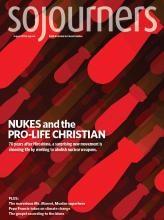VATICAN II attempted to change the Roman Catholic Church from an insular and defensive purveyor of 19th century religious practices to one with an incarnational theology and a vigorous recognition that the laity are called to be holy and to participate actively in the Church. Archbishop Raymond Hunthausen tried to live this out in his Seattle archdiocese, making changes that empowered both men and women and trying to build a diocese that was indeed “the people of God.”
A record of this important work and its devastating fallout are at the heart of A Still and Quiet Conscience. Hunthausen’s early years growing up in a close and very Catholic family, attending an old-school seminary, serving at Carroll College and as bishop of Helena, Mont., and now living in prayerful retirement, are interesting bookends. However it is a fearsome Vatican investigation into Hunthausen and its ambiguous result that are the center of this well-researched and helpfully indexed book.
I was angered when I read of the duplicity, divisions, and cover-ups within the Catholic Church in the last years of the 20th century. The “irregularities” cited as the reason for the investigation into Hunthausen were practices also found in other (uninvestigated) U.S. dioceses, such as letting people discuss the ordination of women, allowing unleavened bread at Communion, and allowing the gay rights group Dignity to worship on church grounds.
Read the Full Article

